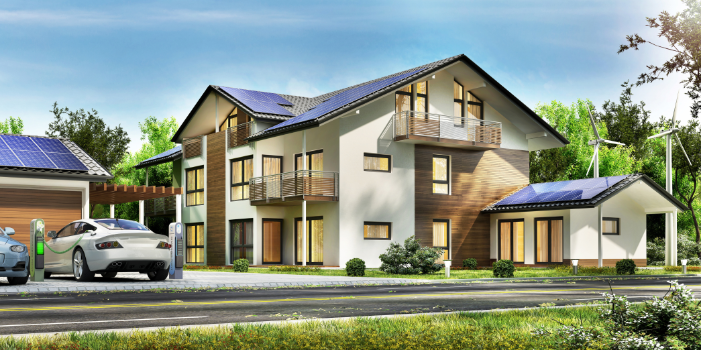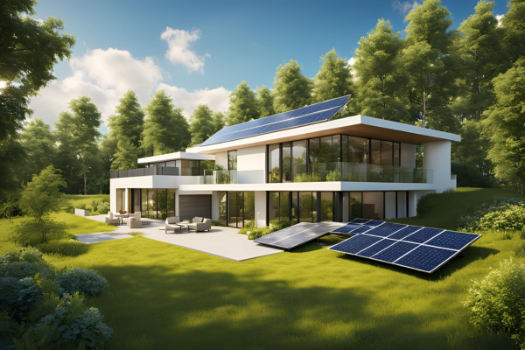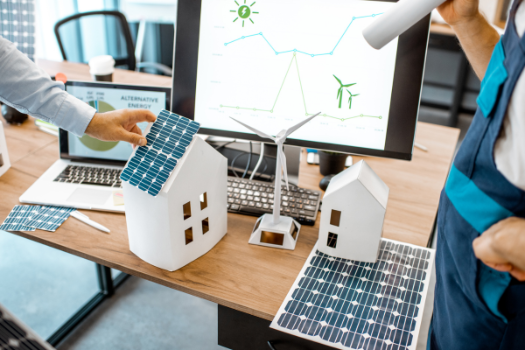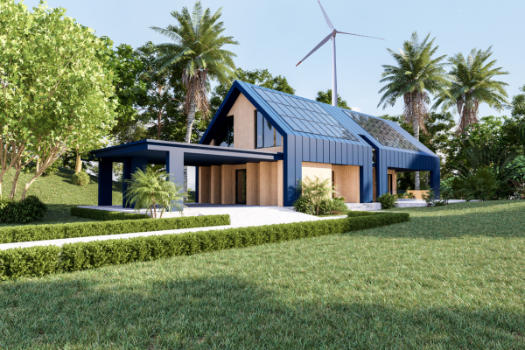
Zero Net Energy Buildings: Pioneering Sustainable Construction with BIM
Introduction
Zero Net Energy (ZNE) buildings are leading the shift toward sustainable construction, producing as much energy as they consume. With climate concerns growing, the construction industry is facing pressure to reduce carbon footprints and build structures that are environmentally friendly and cost-effective in the long run. ZNE buildings meet these goals by balancing energy use with on-site renewable energy sources. However, creating buildings with such efficiency requires more than traditional design approaches—it demands innovative tools and strategies.
This is where Building Information Modeling (BIM) comes into play. BIM allows construction teams to manage the lifecycle of a building with a focus on sustainability. From project tracking and resource allocation to collaboration tools and energy simulations, BIM provides a central platform to streamline the entire construction process. In this article, we’ll explore how BIM supports the design and construction of ZNE buildings, helping to maximize energy efficiency and meet sustainability goals.
Understanding Zero Net Energy Buildings
Zero Net Energy (ZNE) buildings are designed to balance energy use by producing as much as they consume over the course of a year. This balance is often achieved through renewable energy sources, like solar panels or wind turbines, which generate clean energy to power the building. By aiming for zero energy consumption, ZNE buildings reduce their dependence on traditional power sources and lower their carbon footprint significantly.

The benefits of ZNE buildings go beyond environmental impact. Economically, they offer lower operational costs, as the reliance on external energy sources diminishes over time. This reduction in energy costs makes ZNE buildings an attractive choice for both developers and building owners, providing long-term financial savings while also supporting sustainability goals. In recent years, the construction industry has embraced ZNE principles more widely, with many new projects aiming for net-zero energy certification. This trend signals a growing commitment to sustainable practices, shaping the future of construction toward a greener, more efficient path.
The Role of BIM in Sustainable Construction
Building Information Modeling (BIM) is a powerful digital tool that captures a building’s physical and functional details in a virtual space. This model acts as a central source of information, allowing architects, engineers, contractors, and stakeholders to collaborate effectively at every stage of the project. BIM not only improves coordination but also enables teams to make informed decisions that enhance a building’s sustainability.

In terms of sustainability, BIM offers several key benefits. One of its main features is energy analysis, allowing teams to simulate and analyze energy use throughout the design process. These simulations help optimize building performance, ensuring energy efficiency before construction even begins. Additionally, BIM aids in material selection by providing access to data on sustainable options, enabling teams to choose materials with a lower environmental impact. Life Cycle assessment is another advantage, allowing for a comprehensive view of the building’s environmental impact across its lifespan, ensuring sustainable practices from start to finish.
Integrating BIM for Achieving ZNE Buildings
In the design phase of Zero Net Energy (ZNE) buildings, BIM plays a vital role in energy modeling. By simulating energy consumption, BIM helps teams identify ways to improve efficiency from the start, shaping the building’s structure and systems to minimize energy demand. This capability is crucial for incorporating passive design strategies, like optimizing natural lighting and ventilation, which can significantly reduce energy needs. With BIM, designers can explore various configurations and make data-driven decisions to maximize a building’s natural energy efficiency.

During the construction phase, BIM supports precise and efficient building practices. With its detailed digital model, construction teams can follow accurate guidelines, reducing material waste and preventing costly errors. BIM also fosters collaboration by providing a shared platform where architects, engineers, and contractors can access up-to-date project information, allowing for seamless adjustments and minimizing the risk of miscommunication.
BIM continues to provide benefits during the building’s operation and maintenance. By tracking real-time energy performance, facility managers can monitor and adjust systems as needed to sustain zero net energy goals. The adaptability of BIM also makes it easy to update models, whether for minor renovations or major system upgrades, ensuring the building remains energy-efficient over time. Through each phase, BIM empowers ZNE buildings to reach their full sustainable potential.
Case Studies of ZNE Buildings Utilizing BIM
One notable example of ZNE buildings using BIM is the NREL Research Support Facility in Colorado. This project employed BIM to design a workspace that balances energy use and production efficiently. Through BIM’s energy modeling, the team incorporated solar shading, natural ventilation, and efficient insulation, achieving zero net energy goals. BIM’s digital model enabled collaboration at each step, helping the facility perform at high standards while keeping costs in check.
Another example is the Energy Positive Home in Vermont, designed to generate more energy than it consumes. The project team used BIM to optimize the building’s solar energy capture and natural cooling features. This model was also instrumental in selecting sustainable materials with low environmental impacts. In both cases, BIM provided insights that were critical to achieving zero net energy, proving that the integration of this technology can be transformative in reaching ambitious sustainability targets.
Challenges and Solutions in Implementing BIM for ZNE Buildings
Implementing BIM for Zero Net Energy (ZNE) buildings comes with a few challenges, notably the higher upfront costs and the need for skilled personnel. The initial investment required for BIM tools, software, and advanced modeling can be substantial. Additionally, using BIM effectively requires specialized training, as the technology involves complex processes and technical skills. Without trained staff, it’s challenging to maximize BIM’s potential, especially when targeting the precise standards of ZNE buildings.
However, these challenges can be overcome with strategic solutions. First, while the upfront costs are higher, BIM ultimately leads to long-term savings. By reducing waste, enhancing energy efficiency, and preventing costly errors, BIM pays for itself over the building’s life cycle, making it a smart investment for sustainable construction. Investing in education and training is also crucial. Training programs can empower staff to use BIM to its full capacity, equipping teams to manage energy modeling, project tracking, and sustainability goals effectively.
The Future of Sustainable Construction with BIM
The future of sustainable construction is being shaped by emerging technologies, especially with the integration of AI into BIM. AI-powered BIM tools allow for real-time data analysis, smarter resource allocation, and enhanced energy simulations, making it easier to design buildings that achieve Zero Net Energy (ZNE) goals. As these technologies advance, BIM will continue to be a key player in driving construction efficiency and sustainability.

The industry is also moving toward broader adoption of BIM as a standard for sustainable practices. Many construction firms are recognizing BIM’s value in project planning, risk management, and resource tracking. This trend is likely to accelerate as governments implement policies and regulations promoting sustainable building practices. Policy support for BIM in ZNE projects could push more companies to adopt it, creating a stronger foundation for eco-friendly building standards across the industry.
Conclusion
BIM is critical to the success of Zero Net Energy buildings, providing the tools to design, build, and maintain sustainable structures. By adopting BIM, industry professionals can drive change, improving construction workflows, cost management, and environmental impact. The path toward a sustainable built environment requires a united effort, and BIM offers a practical, efficient solution to meet these ambitious goals. Together, we can create a future where every building is energy-efficient and environmentally responsible.